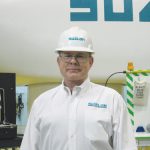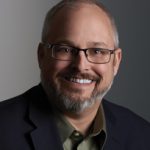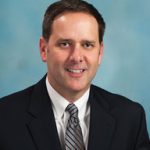Can you tell us a little bit about Avanti’s history in the wind energy industry?
Avanti was established in 1885 and has more than 125 years of experience with ladders.
Avanti started off with production of wooden ladders and was a pioneer in the industry. Since then the product range has been extended to include ladders made of aluminum and fiberglass. It was the aluminum ladder that introduced Avanti to the wind industry in Denmark 30 years ago. Today, the principal product range of Avanti consists of safety systems, internals for wind turbine towers, and technical services supported through our Avanti production and service business units in Denmark, the U.S., the U.K., Germany, Spain, Brazil, Australia, India, and China.
How would you describe Avanti’s commitment to safety?
Our mission at Avanti is “Safe work in wind turbines.” We are 100 percent committed to safety first in everything we do as we serve the wind industry through the development of systems, product and services.
How does that philosophy play out in the safety training Avanti offers?
The majority of our products are safety products and a human life depends on its performance. As such it is imperative to support the user with safety training in how to inspect, use, and troubleshoot the installed product.
Authorities having jurisdiction in the country or state typically demand this safety training and as a minimum, annual inspection of all safety products. One example is wind turbine elevators, where it is required for the technician to have documented training prior to the use the elevator or lift. The same applies for pre-use, use and annual inspections of the PPE fall protection equipment on the ladder or the rescue gear carried by the technician.
Different levels of safety training are available through online, open courses and closed courses at Avanti with focus on fall protection, rescue and evacuation training as well as specific product training.
Is there a difference between a service lift and a work cage?
It is important to first understand that every country and every state have a different opinion about what this device is called. For the longest time, work cages, man lifts, material lifts, service lifts all referenced the same product depending on the manufacturer of the product.
Over the last few years however, ASME and AWEA have taken an active role through various committee work to develop a standard specifically for the U.S. and Canadian market called Wind Turbine Elevators A17.1.5.11. This ASME code will affect the wind industry positively by defining clearly the product safety requirements to ensure code compliance and easier permitting.
Now that we have better defined the product as a Wind Turbines Elevator (WTE) you can split that into three categories depending on how the product is installed inside the OEM’s wind tower design. You will find that some WTE’s are wire guided, ladder guide or based on a rack and pinion system. All three options are available through Avanti.
What sets Avanti apart from the long list of other companies offering PPE?
There are many different PPE distributors promoting different brands. Some of these many brands are private label products made by the same manufacturer. You will however find that behind many of these brands are a few large fall protection and PPE manufacturers. When researching product amongst these manufacturers it is important to ensure that all the relevant standards are met and can be used in multiple jurisdictions as technicians are traveling from project to project, country to country.
Avanti, as a global manufacturer of PPE and fall protection systems, develops and tests against all relevant standards in the U.S., Canada, Brazil, Australia, Germany, and the U.K. I know that not all technicians travel, but if a product is developed with a global mindset that not only fulfills the US/CAN Standard, but also more difficult criteria from a different country, then you end up with a safer product.
Beyond lifts and fall protection, the company offers safety inspections and certification services. Can you talk about these services?
As I mentioned before, depending on the jurisdiction and the safety equipment pre-use, semi-annual or annual inspection must take place to ensure the continued safe use and compliance of the safety product. Here in the US, this is clearly defined through OSHA, ANSI and ASME.
Through our Avanti Service Group we provide One-Stop-Shop safety inspections that include the Wind Turbine Elevator, Ladder and Fall Protection, Fire Extinguisher, Safety Gear, PPE and Anchor Points in addition to the relevant Safety Training. The benefit to the Wind Farm owner/operator is improved uptime as fewer contractors interrupt the turbine availability during multiple visits. It also reduces mobilization costs as more services are completed through one trip to the tower. Let’s not forget the compliance aspect, it allows the owner of the wind farm to obtain and store all the relevant inspection forms and certifications from one inspection and training company versus many contractors.
What can you tell us about Avanti’s tower internals?
The trend in the wind industry is fewer suppliers handling a larger scope, typically referred to as a tower internals kit set. At Avanti we have invested heavily in manufacturing equipment to not only manufacture tower internals in Aluminum and Galvanized steel but also the large logistical setup to handle +1500 line items per tower. A tower internals kit set scope includes everything from zip ties and labels to light fixture, power cables, platforms and ladders.
Wind turbine OEMs are concerned about the cost and quality of the tower internals. By consolidating scope, we can leverage our purchasing power, saving the OEMs and tower manufacturers money while improving lead time and reducing productivity loss.
Being a tower internals kit set supplier is more than being a metal fabricator. It is also about supporting the OEMs and tower manufacturers through optimizing tower internals design; cost out projects, improved cash flow; installation efficiency training; and in some cases, completing the actual installation during peak production.
| www.avanti-online.com | info@avanti-online.com | @AvantiWSH |








































